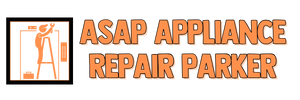In modern kitchens, Microwaves have emerged as indispensable tools, streamlining meal preparation for efficiency and convenience. Nevertheless, akin to other household appliances, Microwaves can develop problems with prolonged use. Investigate the possibilities of diagnosing and fixing the issue yourself or with professional assistance rather than deciding to replace the Microwave right away due to malfunction. We’ll cover common Microwave issues and suggested fixes in this comprehensive guide, helping you avoid wasted time and money.
Section 1: The Safety Foundation
Before initiating microwave repair, remember that safety comes first. Microwaves operate with high voltage and can present electrical risks. It is vital to observe these safety protocols:
Unplug the Microwave: Always begin by disconnecting the microwave from the power source before attempting any repairs.
Avoid Water: Protect yourself from electrical shock by refraining from spraying water or using wet materials inside the microwave.
Wear Safety Gear: For your safety, ensure you wear the correct protective gear, including gloves and safety goggles, when dealing with electrical components.
Section 2: Resolving Microwave Hiccups
Microwave Doesn’t Start:
Solution: Inspect the status of both the power source and the circuit breaker. If they are in good condition, the issue might be related to a blown fuse or a faulty door switch. Replacing these elements may offer a solution.
Microwave Functions but Doesn’t Provide Heat:
Proposed course of action: A malfunctioning magnetron, capacitor, or diode could be the cause of your microwave issues. Contact a professional technician to replace these components.
Sparks Emanating from the Microwave: What’s Wrong?
Proposed course of action: Carefully inspect the inside for any metal objects or a compromised waveguide cover. Take immediate steps to remove foreign objects and consider replacing the cover if necessary.
Unusual Sounds Emanating from the Microwave:
Proposed course of action: If your microwave is noisy, check the turntable motors and cooling fans. Replacing these parts is likely to resolve the issue.
Incomplete Seal or Closure of the Microwave Door:
Proposed course of action: If problems arise, initiate a thorough examination of the door seal for debris or food particles and ensure meticulous cleaning. If the issue persists, contemplate replacing the door latch or hinges.
How to Deal with a Microwave Buttons/Keypad That’s Not Responding:
Proposed course of action: If problems arise, begin by cleaning the keypad and ensuring there’s no moisture or debris causing a malfunction. If the issue persists, contemplate replacing the control panel or membrane switch.
How to Handle an Overheating Microwave: Step-by-Step Guide
Proposed course of action: When dealing with overheating, the initial steps include maintaining proper ventilation and removing obstructions near the microwave. If the issue persists, consider replacing a malfunctioning thermostat or sensor.
Pinpointing the Appropriate Moments to Engage a Professional – Section 3
Although basic repairs can address some microwave issues, it’s prudent to consult a qualified technician for specific problems:
High-Potential Parts: When dealing with components like the magnetron, capacitor, and diode in repairs, specialized knowledge and tools are a must.
Detailed Wiring Complications: Handling electrical wiring is best left to professionals if you’re not at ease with it.
Safety Considerations: When safety or the microwave’s integrity is in doubt after troubleshooting, don’t hesitate to call a technician.
Microwave maintenance is an economical strategy for increasing its longevity. With proper safety measures and troubleshooting of common issues, minor problems can frequently be self-resolved. When facing more complicated issues or harboring doubts about the repair steps, it’s advisable to reach out to a skilled technician for support. You may extend the useful life of your microwave for many years with the right knowledge and safety precautions.

